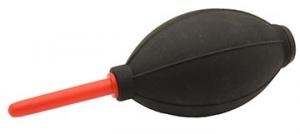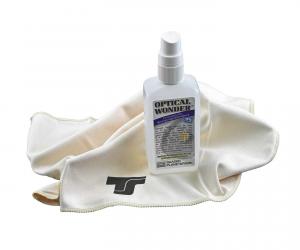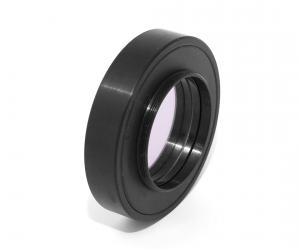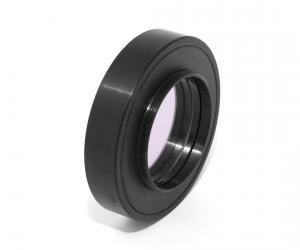- Telescopes
- Overview:
Telescopes - Achromatic Refractor
- Apochromatic Refractor
- Overview:
Apochromatic Refractor - ED Refractor - less color aberration than an achromatic
- SD APO - color free 2-element APO objective
- EDT APO - 3 element ED objective
- High End APO with 3-element APO objective - no color aberation
- Flatfield APO with flat field for Astrophotography
- All Apos and EDs from all manufacturers - large overview
- TS APO and ED from Japan with high quality optics
- Overview:
- Newtonian Telescopes
- Dobsonian Telescopes
- RC Ritchey Chretien Telescopes
- Casssegrain Telescopes
- Reflektor Telescopce with Lens Correcture
- Maksutov Cassegrain Telescopes
- GoTo Telescopes
- Solar Telescopes H-Alpha
- Overview:
- Mounts Tripods Rings Rails Power Supply ...
- Overview:
Mounts Tripods Rings Rails Power Supply ... - Mounts Equatorial with GoTo
- Mounts Equatorial without GoTo
- Mounts Azimutal with GoTo
- Mounts Azimutal without GoTo
- Mounts GoTo - Harmonic Drive
- Travel mounts for astro imaging
- Tripods Piers Polar Wedges
- Mount Control & Electronics
- Dovetail Clamps, Plates and Mount Adapters
- Tube Rings
- Power Supply
- Counterweights Balance Weights
- Mount Accessories - Other
- Overview:
- Telescope Accessories
- Overview:
Telescope Accessories - Eyepieces
- Barlows & Reducer Lenses
- Diagonal Mirrors and Prisms
- Binocular Viewers
- Finder Scopes
- Telescope Collimation and Test
- Cleaning Tools
- Transport and Storage
- Dust protection for Telescopes & Accessories
- Stray Light Protection
- Dewcaps and Heater
- Focusers, Adapters, Motorfocus
- Telescope DIY & Improvement
- Other telescope accessories
- Replacement Parts
- Overview:
- Filters
- Overview:
Filters - Color Filters and Color Filtersets
- Nebular Filters for Visual Observing
- Neutral-Density and Polfilter
- Photo Narrowband Nebular Filters
- Photo Broadband Filters
- Photo Planetary Filters
- Photo R-G-B and IR Cut Filters
- Photo - Filtersets
- Photometric Filters
- Clip Filter for DSLR Cameras
- Filter Wheels and Filterslider
- Solar Filters for white light
- Solarfilter for H-Alpha and Calcium
- Overview:
- Adaptors
- Overview:
Adaptors - Adapter 1,25" and 24,5mm
- Adapter 2"
- Adapter T2 - M42x0.75
- Adapter M48x0,75
- Adapter M54
- Adapter SC
- Adapter M63
- Adapter M68
- Adapter to other Threads
- Adapter Extensions
- Adapter camera bayonet
- Adapter Objective Filterthread
- Adapter Quick Changing , Rotation
- Adapter Eyepiece Projection
- Adapters Tilting
- Overview:
- Astrophotography and Photography
- Overview:
Astrophotography and Photography - Cooled Cameras
- Cameras without Cooling
- Deep-Sky Cameras uncooled
- Set-Offers Camera, Filter, Wheels
- Acessories for Cameras
- Travel mounts for astro imaging
- Imaging Correctors for Telescopes
- Autoguiding Cameras & Sets
- Everything for Guiding
- Focusing aids - Bahtinov mascs
- Flat Field foils and boxes
- Lenses for Cameras
- Piggyback Camera Holder
- Camera Bags, Photocases & more
- Digital Camera and Smartphone Adapter
- Other photo accessories
- Overview:
- Binoculars, Spotting Scopes, Microscopes, Range Finders
- Overview:
Binoculars, Spotting Scopes, Microscopes, Range Finders - Spotting Scopes and Acessories
- Roof Prism Binoculars
- Binoculars with Porro prisms
- Binoculars from 100mm Aperture
- Binoculars with 1,25 inch eyepieces
- TSMX APO Binoculars
- Binoculars for Astronomy
- Binoculars Hiking Bird watching
- Monoculars - Opera Binoculars
- Accessories for Binoculars
- Range Finders
- Microscopy
- Bags for Phototripods & Binoculars
- Overview:
- Phototripods and Binomounts
- Books, Software
- Overview:
Books, Software - Books for Astronomy Beginners
- Star Charts and Planispheres
- Books about our Solar System
- Observing Tips for Amateurs
- Popular Astronomy Literature
- Teaching material
- Astrophotography books
- Telescopes, Observatories, Construction
- Calendars Yearbooks
- Software, Star Charts
- Books for Microscopers
- Books Nature and Animals
- Nature Photography TimeLapse
- Overview:
- Night Vision, Magnifiers, Weather, Domes & more
- Beginner Astronomy and Gift Ideas
- Second Hand & Special Offers
- New products
Manufacturer: ANTLIA
Product number: ALP-T3-SHB2
EUR555.00new
EUR 555,00
incl. 19 % VAT (DE)
The VAT indicated refers to that applicable in Germany. After logging in, the VAT amount is adjusted to the applicable VAT of the stored delivery country. Therefore, the final price may vary accordingly.
excl. 6.95 € shipping costs (DE)
more details to the shipping costs ...Please log in to calculate shipping costs to your country.
Product expected to be available from 25.11.2025
There are no reviews for this product
- Details..
- Technical data..
- In the box..
- Manufacturer infos..
- Safety informations..
Antlia ALP-T Dual Band 3.5 nm Narrow Band Nebula Filter for B/W and Color Cameras
Antlia designed this 3.5 nm dual line-pass filter for one-shot color cameras (OSC), DSLRs and mirrorless system cameras. However, it can also be used as a narrow-band filter for monochrome cameras to save valuable shooting time and produce extremely high-contrast luminance shots, even in moonlight and near cities.The ALP-T dual-band filter passes red [S II] light (672.4 nm) and blue-green H-beta light (486.1 nm) and blocks all other wavelengths. In particular, the unwanted wavelengths of light pollution and airglow are blocked. This allows you to take deep deep-sky images even in moonlight and from close to the city. The signal-to-noise ratio is greatly increased, allowing you to bring out even the faintest nebulae.
The filter is a significant addition to the popular Antlia ALP-T dual band 3 nm Ha&OIII filter. The combination of these two dual band filters allows extreme narrow-band images with OSC cameras by capturing the spectral data from 4 channels i.e. H-alpha/O-III/S-II/H-beta. The spectrum of these four channels can be separated and recombined into various colour palettes in your post-processing. The resulting images can be used for luminance contrast enhancement of traditional RGB-balanced images or creation of images in various popular false-color palettes such as H-O-Hb, S-H-O, H-S-OHb, H-O-O etc.
Why design S-II and H-beta bands pass instead of O-III and S-II bands?
The filter is dedicated to capture H-beta and [S II] emission lines. We know that [S II] is singly ionized sulfur that emits light in the deep red part of the spectrum, beyond H-alpha, but the contribution of H-beta to emission lines in nebulae is frequently overlooked, even though it is the second most common hydrogen emission after the H-alpha line. Capturing more [O III] will boost the existing signal but does not give more information. However, H-beta has the potential to reveal structures not seen using [OIII]. The design is to capture the H-beta emission line in the certain nebulas that contain some blue spectrum, this cannot be captured by H-alpha, S-II and O-III filters. Greater and richer details will be captured in many nebulae images to achieve results with a superior signal-to-noise ratio.
It is generally accepted that the [O III] signal is a relatively weaker contributor to nebulae images. The O-III bandpass sensitivity is an important consideration for any nebulae filter. Most colour cameras (OSC) use a RGGB Bayer pattern. The allocation of twice as many green pixels as compared to either red or blue pixels enables a much-improved capture of the [O III] signal. Furthermore, higher [O III] signal can be achieved by additional exposure using the Antlia ALP-T Ha&O3 filter, then isolating the GB channels, followed by synthesis of an O-III channel to add into your stack.
In the situation where you may only want to add [S II] to your H-alpha and [O III] data, then it may be preferable to buy one S-II narrowband filter and achieve a cleaner [S II] spectral emission. However, Antlia´s new filter design (SII&Hb) includes the H-beta emission line which provides a distinct improvement in nebulae contrast and improved feature separation in H-beta areas.
The quality features of Antlia narrow band filters at a glance:
| Substrate: | Schott optical substrate |
| Filter thickness: | 2 mm |
| Cell: | Low-profile (5 mm) metal cell with M48x0.75 filter thread (2.4 mm length of male thread) |
| FWHM: | 3.5 nm |
| CWL: | 672.4 nm (90% maximum transmission), 486.1 nm (85% maximum transmission) |
| Off-band blocking: | OD4.5 |
| Surface quality: | S/D (scratch/dig)= 60/40 (Refer to MIL-O-13830) |
| Surface accuracy: | Lambda/4 or better |
| Manufacturer / Importeur: | Teleskop-Service Ransburg GmbH |
| Street: | Von-Myra-Str. 8 |
| ZIP / City: | 85599 Parsdorf |
| Country: | Germany |
| Telefon number: | +49 89 99228750 |
| Email: | info@teleskop-service.de |
| Website: | www.teleskop-service.de |
Safety informations: PDF Download
Recommended accessories
Cleaning & Collimating
Customers who bought this product also bought...
General Accessories
TS-Optics M48 Filter Holder for mounted 2" Filters - Length 15 mm
EUR 64,90RRP EUR 74,00you save 12.3% (EUR 9,10)
Similar Products
Reviews




















